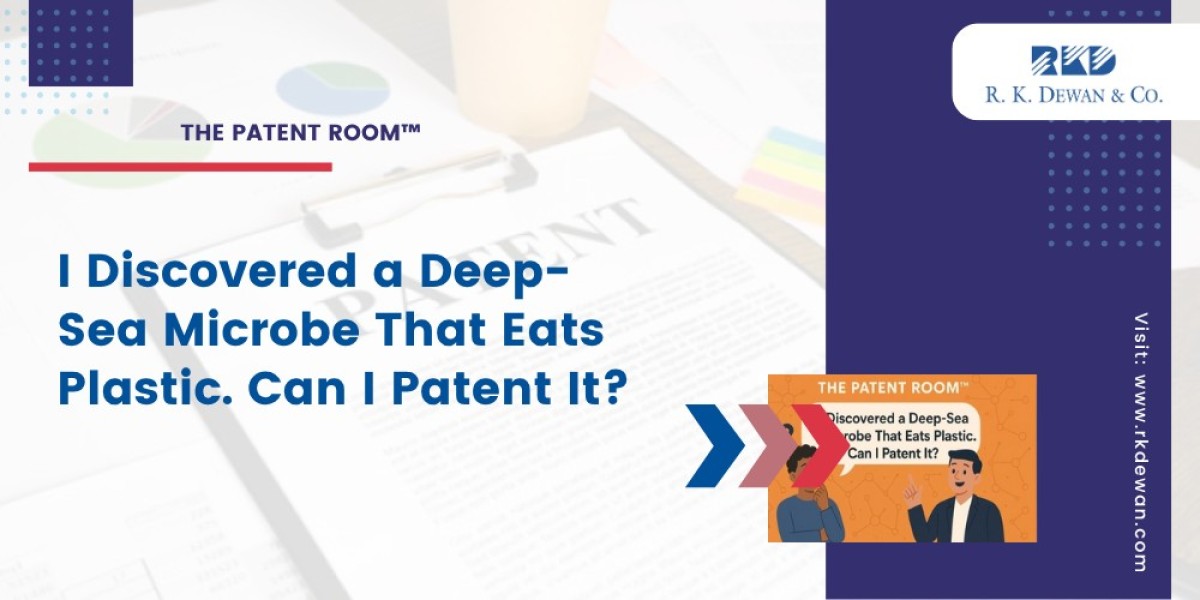Suppose you isolate a microorganism from a deep-sea trench that breaks down plastic waste into harmless compounds. It’s an extraordinary find with massive environmental and commercial potential. The next logical step? You want to protect it. But here’s the critical question — can you actually patent it?
From a legal standpoint, this is where discovery meets the limits of patent law. Under the Indian Patents Act, there’s a clear distinction between something found in nature and something created or modified by human intervention. A natural organism, no matter how remarkable, cannot be patented as it exists. However, the moment you introduce technical ingenuity — through genetic modification, industrial application, or a unique process — it may qualify as an invention.
In this article, we unpack how the law views natural discoveries, what Section 3 of the Indian Patents Act says, and how global jurisdictions handle similar cases. More importantly, we outline the legal strategies innovators can adopt to turn a scientific discovery into a patentable invention.
Because in intellectual property law, protecting innovation isn’t just about what you find — it’s about how you transform it.
The Discovery: Nature’s Own Recycler
Suppose: during an expedition, you isolate a rare microorganism from a deep-sea trench. To your surprise, it does not just survive in the presence of plastic waste; it actually breaks it down into harmless compounds. It is not a lab trick, not a human-made organism, but a natural marvel.
You bring it to your lab, culture it, and confirm: the microbe truly digests plastic. It could solve marine pollution, landfill waste, and even industrial cleanup problems. Naturally, your next question is Can I protect this discovery?
Here’s where things get tricky. In the world of patents, discovering something nature made is not the same as inventing something new. Patent law does not reward mere explorers of nature; it protects the creators who add something novel to it.
The Law: Section 3 of the Indian Patents Act, 1970
India’s patent law draws a very clear boundary between discovery and invention. This boundary lives inside Section 3 of the Indian Patents Act, 1970, the part that lists what cannot be patented.
The key clauses are:
- Section 3(c) – “The mere discovery of a scientific principle or the formulation of an abstract theory, or discovery of any living thing or non-living substance occurring in nature” is not patentable.
In short, if you found it in nature, even if it’s extraordinary, you can’t claim ownership of it.
- Section 3(j) – “Plants and animals in whole or any part thereof other than microorganisms but including seeds, varieties and species and essentially biological processes for production or propagation of plants and animals” are not patentable.
However, there’s a small door left open; microorganisms can be patentable, but only if they’re human-made, modified, or technically produced through innovation.
So, your deep-sea microbe, in its natural state, falls under Section 3(c), a mere discovery of a living thing occurring in nature, and is therefore not patentable as it is.
But all hope is not lost.
If you genetically modify that microbe to improve its plastic-degrading efficiency, or develop a novel process to use it industrially, you’ve moved from discovery to invention. That’s the magic line in patent law.
Where the Line Blurs: Discovery vs. Invention
Think of it this way:
- Discovery is like finding gold.
- Invention is like turning that gold into a working engine.
If you simply discover a deep-sea microbe that digests plastic, you’ve found gold. But if you engineer it to digest different kinds of plastics, work faster, or function under industrial conditions, that’s an invention.
Indian courts have reinforced this idea. In the Dimminaco AG v. Controller of Patents (2002) case, it was held that even biological materials can be patentable if human intervention or technical processes are involved in their production.
So, while nature gives you the spark, it’s your scientific input, your intervention, modification, or application that makes it patent-worthy.
The Global View: What Other Countries Say
- United States: The famous Diamond v. Chakrabarty (1980) case changed everything. The U.S. Supreme Court allowed a patent on a genetically engineered bacterium that broke down oil spills, stating that “anything under the sun that is made by man” could be patented.
- Europe: The EU Biotechnology Directive (98/44/EC) allows patents on biological material that has been isolated from its natural environment or produced by a technical process, even if it previously existed in nature.
- Japan & Korea: Similar to Europe, natural organisms are excluded, but modified strains or technically isolated forms can be protected.
Conclusion
Discovering a deep-sea microbe that digests plastic sounds like something straight out of science fiction, and it might just save our planet. But in patent law, discovery alone does not make you an inventor.
Under Section 3(c) of the Indian Patents Act, 1970, a living thing occurring in nature cannot be patented. Yet, the moment you apply human ingenuity through genetic engineering, innovative application, or a unique process, you step into the realm of invention.
So, the golden rule here is:
“You can’t patent nature, but you can patent how you transform it.”
Ready to take your innovation from discovery to protection? Our patent law firm in India can help you evaluate the patentability of your scientific breakthrough and craft the right IP strategy to secure it globally.Whether it’s biotechnology, environmental innovation, or industrial research — our team at R. K. Dewan & Co.








